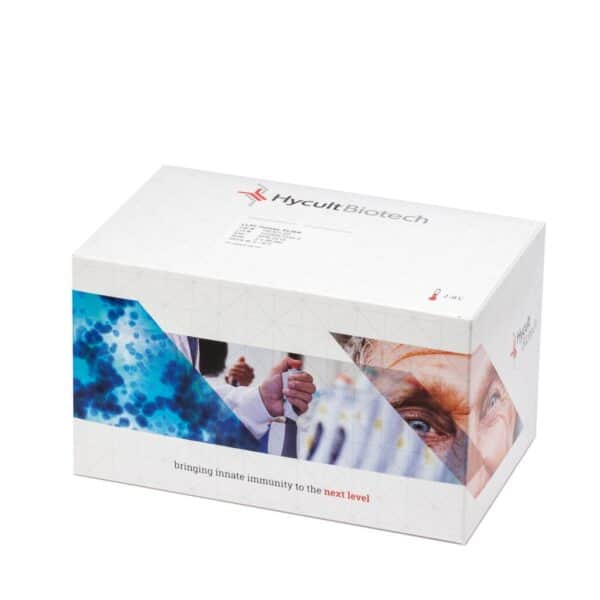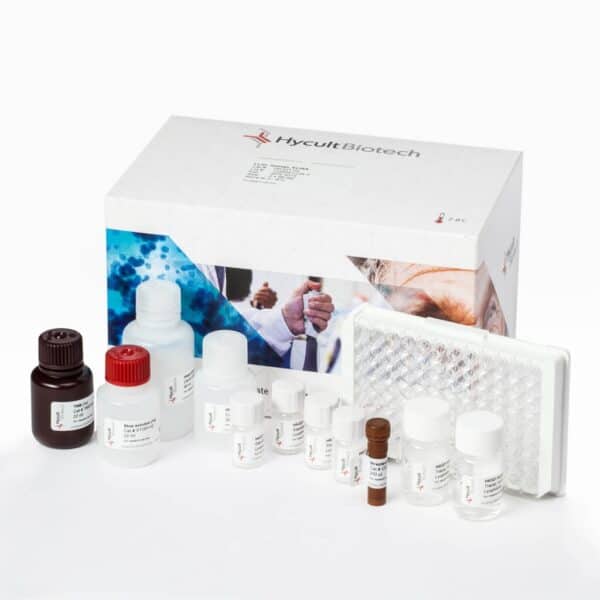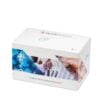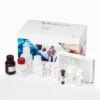sMAdCAM-1, Human, ELISA kit
€825.00 – €1,359.00
The mucosal addressin cell adhesion molecule-1 (MAdCAM-1) is a cell-surface Ig superfamily member composed of two extracellular Ig domains, followed by a mucin-like domain, a transmembrane domain and a short cytoplasmatic domain. It interacts via its N-terminal Ig domain with the lymphocyte homing receptor integrin alpha4beta7. MAdCAM-1 promotes the adhesion of T and B cells, monocytes/macrophages, and potentially eosinophils, basophils, and differentiated mast cells to the vascular endothelium and is critical for lymphocyte homing to the gut. RNA transcripts are predominantly expressed in the small intestine, mesenteric lymph nodes, colon and spleen. MAdCAM-1 transcripts are weakly expressed in human pancreas and brain. The MAdCAM-1 protein (60 kDa) is widely expressed on endothelia in both lymphoid and non-lymphoid tissues. Furthermore, it is expressed in thymic medulla and on high endothelial venules (HEV). This expression increases upon response to several cytokines including TNF-alpha, IL1b and IFN-gamma. MAdCAM-1 expression is upregulated on HEV-like vessels in a variety of chronic inflammatory diseases, and may mediate increased leukocyte trafficking into inflamed tissue. In utero and during early childhood, MAdCAM-1 plays a dominant role in lymphocyte-endothelial cell adhesion at both mucosal and nonmucosal sites. In contrast, in the adult the expression of MAdCAM-1 is restricted to mucosal tissues and has been shown to be dramatically up-regulated during intestinal inflammation. In the gut, MADCAM-1 is basically expressed on follicular dendrites in Peyer’s patches. Its expression is dramatically increased in inflammatory bowel disease (IBD). It is expressed in animal models of IBD and in human tissue samples from patients with Crohn’s disease and ulcerative colitis. MAdCAM-1 is strongly expressed in the synovium of osteoarthritis patients, predominantly on the endothelial lining of blood vessels, but also within the vessel lumen. The MAdCAM-1/integrin alpha4beta7 homing system possibly participates in gastric inflammation in response to Helicobacter pylori infection and contributes to mucosa-associated lymphoid tissue (MALT) formation typically leading to the development of nodular gastritis. Higher expression of MAdCAM-1 is reflected in elevated levels of the circulating soluble form of MAdCAM-1 (sMAdCAM-1). Since MAdCAM-1 is elevated in inflammatory, infectious and malignant diseases, sMAdCAM-1 serves as a perfect non-invasive biomarker for disease acitivity. In sera of healthy donor, sMAdCAM-1 was detected at 236.5 ± 55.8 ng/ml. In urine of healthy donors, sMAdCAM-1 was detected at 20-123 ng/ml. Measurement of sMAdCAM-1 levels is potentially useful to monitor disease activity and the results of therapy.




